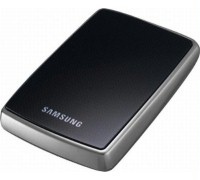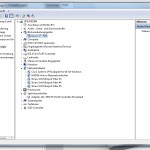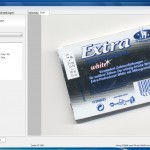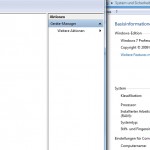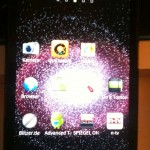 Das Sony Ericsson Xperia Arc hat es in meine Hände geschafft. Aufgrund der vielen Ähnlichkeiten zum Sony Ericsson Xperia Play habe ich mich in einem sehr kurzen Test dem Smartphone gewidmet.
Das Sony Ericsson Xperia Arc hat es in meine Hände geschafft. Aufgrund der vielen Ähnlichkeiten zum Sony Ericsson Xperia Play habe ich mich in einem sehr kurzen Test dem Smartphone gewidmet.
Category: IT & Wordpress
Everything about IT goes here. Additionally everything about Wordpress is also here.
Kurztest – Sony Ericsson Xperia Arc
(only in german, sorry)
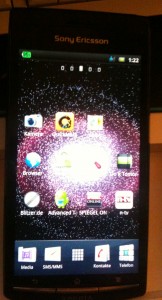 Vieles von dem was ich an dieser Stelle über das Sony Ericsson Xperia Play geschrieben habe, trifft auch auf das Sony Ericsson Xperia Arc zu. Insofern werde ich mich diesmal etwas kürzer halten.
Vieles von dem was ich an dieser Stelle über das Sony Ericsson Xperia Play geschrieben habe, trifft auch auf das Sony Ericsson Xperia Arc zu. Insofern werde ich mich diesmal etwas kürzer halten.
Das Xperia Arc ist mit weitem Abstand das dünnste Smartphone was ich in den letzten 1-2 Jahren in den Händen hatte. Kein Wunder – das Gehäuse misst in der Tiefe nur 8,7mm. Und dazu gibt es ein riesiges 4,2″ Display auf der Vorderseite mit der etwas seltsamen aber nie unpraktischen Auflösung von 854 x 480 Pixel. Auch die Helligkeit stimmt und macht eine wesentliche bessere Figur als beim Xperia Play. Einziger Schwachpunkt ist, dass das Display hin und wieder eine Eingabe nicht erkennt, so dass man gezwungen ist diese noch einmal vorzunehmen.
Die Verarbeitung ist leider – Sony Ericsson typisch – weiterhin auf einem klapprig und billig-wirkenden Niveau. Die Android Tasten haben praktisch keinen Druckpunkt und machen nicht den Eindruck, als ob sie 2 Jahre Dauereinsatz durchhalten. Zudem sind sie – ähnlich wie beim Xperia Play – nicht direkt beleuchtet. Immerhin hat SoE das Problem offensichtlich erkannt und hat Mini-LED´s zwischen die Tasten platziert. In der Dunkelheit bringt das leider nix, denn die LED´s leuchten zwar, aber beleuchten eben nicht die Tasten. Dafür gibt es nur 3 statt 4 Android Tasten. Mir ist kein Nachteil aufgefallen, bin mir aber sicher, dass die Power User welche finden.
Die Performance des Xperia Arc ist absolut in Ordnung. Alles geht zügig und ohne Verzögerungen von statten. Nach dem Update auf Gingerbread (im Auslieferungszustand war 2.2 drauf) hat sich die Geschwindigkeit gefühlt sogar noch etwas gesteigert. Ärgerlich sind die schon beim Xperia Play negativ aufgefallenen langen Einschalt- und Neustartvorgänge. 2-3 Minuten sind die Regel, 5 Minuten sind auch drin.
Fazit: Sehr dünnes Smartphone mit großem Display und guter Performance. Leider mit der Sony Ericsson typischen schlechten Verarbeitung.
Hat mir gefallen:
- Leistungs des Smartphones (Geschwindigkeit in Menüs, beim Browsen, etc.)
- großes, sehr helles Display
- sehr dünn
Hat mir nicht gefallen:
- Billige Verarbeitung
- Mittelmäßige Akkulaufzeit
- Unbeleuchtete Android Tasten
- Display erkennt nicht immer die Eingabe
Eine kleine gute Nacht Geschichte…
(only in german – sorry)
Auch wenn ihr mich gleich für den absoluten Volln00b haltet, möchte ich euch eine kleine Geschichte von meinem heutigen Abend erzählen. Ich wollte endlich mal mein neues Asus Mainboard einbauen, was schon seit 2 Wochen hier rumliegt. Gesagt getan. Schon beim Ausbau des alten Asrock Boards viel mir auf, dass es doch deutlich kleiner ist als das neue Asus. Nach kurzem angestrengten Nachdenken stelle ich dann fest, dass das alte Board wohl ein Mini ATX war und auch das Gehäuse nur für Mini ATX ausgelegt war. Wie sonst war es zu erklären, dass das neue Asus zu gut einem Drittel über die Gehäusegrenzen hinausragte. Aber wer braucht schon ein Gehäuse ? Die nächste halbe Stunde verbrachte ich damit, den Lüfter von der CPU zu trennen, was sich als äußerst schwierig herausstellte, da CPU, Wärmeleitpaste und Kühlkörper eine symbiotische Verbindung eingegangen waren. Währendessen machte ich Bekanntschaft mit diesen neuartigen Plastikhalteklammern, die sich nur mit Hilfe einer Spitzzange vom Mainboard trennen liesen. Nur war das gar nicht nötig, denn sie hielten die komplette Kühlerhalterung, aber nicht den Kühlkörper. Das tat nämlich einzig und allein die Wärmeleistpaste. Naja. Das alte Board sollte ja sowieso weg. Im nächsten Schritt wollte ich die CPU aus ihrem Sockel entfernen, was mir allerdings erst gelang, nachdem ich den kleinen Hebel am Sockel mit einem lauten Knacken in die 90 Grad Position befördert hatte. Ich war mir eigentlich ziemlich sicher, dass dies das jähe Ende einer ganzen Zahl von Pins an der Unterseite der CPU gewesen sein muss, stellte aber zu meiner eigenen Überraschung fest, dass diese alle intakt waren. Offensichtlich muss das heutzutage wohl so sein. Nun gut. Das Asus Mainboard lag jungfräulich vor mir und ich konnte es kaum erwarten, die CPU in ihre neue Heimat zu überführen. Und ganz im Sinne eines ehemaligen deutschen Profitennisspielers hörte ich mich schon bald fragen “ja isser denn schon drin ?”, denn die CPU wollte einfach nicht in den Sockel passen. Nach wiederum kurzen angestrengten Nachdenken erinnerte ich mich dunkel, dass AMD irgendwann mal die Phenom II X4 Serie von AM2 auf AM3 umgestellt hatte. Ein kurzer Blick auf den alten Sockel bestätigte dann diese dunkel Vorahnung. Dort stand fett und nahezu unüberlesbar “AM2” und direkt daneben grinste mich ein Schriftzug mit “AM3” vom neuen Mainboard an. Ahhh ja. Dann brauch ich also ein neues Gehäuse, eine neue CPU und fehlt noch was ? Naja fast, denn nachdem ich mich entschlossen hatte den alten Rechner wieder zusammen zu bauen (denn ohne gehts ja dann doch nicht) erinnerte ich mich daran, dass mir die Grafikkarte schon beim Ausbau deutlich zu verstehen gab, dass sie auf dieses Mainboard und in dieses Gehäuse nur unter äußerster Gewaltanwendung zurückkehren würde.
Danach ging ich Geschirr spülen. Das kann ich.
Sebastian Becker, 22.08.2011, CC-BY-NC-SA
Samsung RMA
Well – it happened as I expected it. One month ago I sent my Samsung S1 Mini – a great little 2.5 inch usb harddisk – in for repair. And I thought how long might it take until I’ll get it back.
Right now, over one month later I still can’t say, because I haven’t got it back. To be continued…
P.S.: Why it needed repair ? From one day to another it transferred data very very slow. After a little research on the net this seems to be a common problem within the S1 series.
Update :
Last week I got a call from Samsungs RMA center. They told me that the S1 Mini is out of stock and they offered me a 250 GB replacement HDD (mine had 160 GB). And yesterday it arrived. I’m happy now, because I have my small portable HDD back and it’s larger then before, but 6 weeks altogether are simply too long. Way too long…
Sony Ericsson Xperia Play – PSX Emulator
If you want to play old PSX games on your Sony Ericsson Xperia Play this is the right solution for you. It is called FPse and delivers excellent PSX gaming to the Xperia Play. You can find it there (Android Market):
https://market.android.com/details?id=com.emulator.fpse
But before you can play you´ll need a PSX bios. In case you don´t want to dump it on your own from your Playstation, you should check out the FPse PSX BIOS app in the Android Market: https://market.android.com/details?id=com.dummies.android.FPBIOS
Sony Ericsson Xperia Play – SNES Emulator
If you want to play old SNES games on your Sony Ericsson Xperia Play this is the right solution for you. It is called Snes9x and delivers excellent SNES gaming to the Xperia Play. You can find it there (Android Market):
https://market.android.com/details?id=com.explusalpha.Snes9x
Efficient memory management with Firefox 5
Huawei E510 / T-Mobile w’n’w Box Multimedia – DVB-T problems
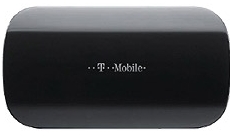 The Huawei E510 / T-Mobile web’n’walk Box Multimedia is a great small UMTS / HSDPA modem combined with a DVB-T receiver. It features an internal antenna as well as an external antenna connector (in my case there was an external antenna in the package).
The Huawei E510 / T-Mobile web’n’walk Box Multimedia is a great small UMTS / HSDPA modem combined with a DVB-T receiver. It features an internal antenna as well as an external antenna connector (in my case there was an external antenna in the package).
When I plugged it into my Windows 7 x64 system it was automatically installed and everything seemed to be great. But when I started the TV software (TotalMediaTV) it failed to find at least a single DVB-T channel. After trying several things I realized that there must be a problem with the driver. So here´s the solution if your device won´t find any TV channels at all:
1.) Connect your device to your PC
2.) Let the device install all the drivers and software
3.) Download the updated software from Huawei (or look below)
4.) Unzip the software and start the exe file
5.) The software will now flash the device and delete all original software from it
6.) After it´s done flashing you´ll find a new software on your desktop called “Mobile Partner”
7.) Start the software, click the TV button, let the wizard search for TV channels
8.) Enjoy viewing !
Important Note: When you flash the device with the new software from Huawei it will delete all the software your provider (or retailer) provided the device with. If you plan to use it as UMTS / HSDPA modem you need to preserve the original software installed in step 2. Be sure only to use this software if you surf with the device. Use the “Mobile Partner” software from Huawei only for watching TV.
(The “Mobile Partner” software doesn´t contain the needed profiles for your local network operator and so there might be unexpected costs when you use it for surfing.)
—
Download: UTPS11.030.01.14.03.B409.zip (Huawei E510 device driver and software)
—
OpenTTD on a Samsung Galaxy Tab with a Bluetooth Mouse
You may know that I love Open Transport Tycoon Deluxe (OpenTTD). It´s on my favourite games list and I also wrote a short article about it when version 1.0 was released. Recently I discovered that a guy name pelya did an Android port of the game using the SDL libary. And since I´m a more or less proud owner of a Samsung Galaxy Tab for a while I decided to give it a try. Right after starting the game one very big problem occured. The controls (and the user interface) hadn´t been redesigned to be used with a touch device (with probably a much smaller screen than a pc has) so the game was pretty unplayable. I was a bit sad about that so I headed over to good old friend Google.
I found a nice solution for the problem by getting my hands on a Logitech Bluetooth Traveler Mouse and connected it to my Galaxy Tab. Android is so flexible that this worked by only 3 finger touches (haaa…on a touch device you can´t say clicks, can you ?) and here´s the video result for you. There´s still some work to do to make the game really well playable. For example right now you can´t access more than a 1-layer menu because Android can´t differ between a mouse click and a mouse click and hold. Pelya – the guy who did the Android port – optimized the SDL configuration already after I gave him a lead but right now SDL doesn´t seem to be capable of doing that kind of mouse emulation. But I think the OpenTTD community will soon have a version ready that will be optimized for mobile devices in any way.
In the meantime you can enjoy the video !
Adaptec AHA 2940 AU SCSI Controller and Epson GT-7000 Scanner on Windows 7 x64
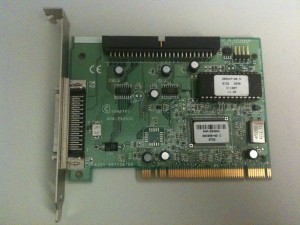 A few months ago I upgraded my girlfriends pc to Windows 7 x64. Sadly it was impossible to find a driver for her 99,- EUR scanner (Belkin somewhat USB). So it didn´t worked anymore. Since then she bugged me with that situation and last weekend I promised her to find a solution. Luckily I had an old Epson GT-7000 SCSI scanner fooling around and an Adaptec AHA 2940 AU SCSI Controller. I used both in my old Windows XP set up years ago. And I thought that the Epson scanner is too precious to simply threw it away. (And by the way: the Adaptec card is from 1997 and the scanner might be 1 or 2 years older). I still remember that I got it from my uncle and that it was so incredibly fast even compared to modern USB scanners. So why not use this for my girlfriend ?
A few months ago I upgraded my girlfriends pc to Windows 7 x64. Sadly it was impossible to find a driver for her 99,- EUR scanner (Belkin somewhat USB). So it didn´t worked anymore. Since then she bugged me with that situation and last weekend I promised her to find a solution. Luckily I had an old Epson GT-7000 SCSI scanner fooling around and an Adaptec AHA 2940 AU SCSI Controller. I used both in my old Windows XP set up years ago. And I thought that the Epson scanner is too precious to simply threw it away. (And by the way: the Adaptec card is from 1997 and the scanner might be 1 or 2 years older). I still remember that I got it from my uncle and that it was so incredibly fast even compared to modern USB scanners. So why not use this for my girlfriend ?
But…I knew that my solution may have some flaws. Firstly finding Windows 7 compatible x64 drivers for the Adaptec and secondly finding Windows 7 compatible x64 TWAIN drivers. Since TWAIN might have a bit of a brilliant design it is commonly known as the most shitty peace of protocol / API in computers history. Especially the last point didn´t equipped me with a lot of hope.
Today was the day to check it out. I was happy that my quite modern pc at least still features an PCI bus. So I fitted the Adaptec SCSI controller in it, connected the scanner through an pretty old school SCSI connection cable (after all that modern it didn´t require a terminator (and no, this has nothing to do with Arnold Schwarzenegger)) and turned my pc on full of expectation. Well the surprise wasn´t too big that neither Windows itself nor Windows Update found a driver for at least one of the 2 devices.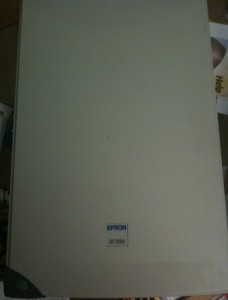
But good Google and a guy called “Linky”(Thx !!!!) in this thread of Germany´s 3DNow Forum solved my first problem with a customized Windows 7 x64 compatible driver for the Adaptec controller (it reminded me very much of my sound driver odyssey with Windows XP x64). I was skeptical towards this approach but I suddenly changed my mind after watching 2 minutes of fine Windows driver installation. And there it was. The device manager showed a successfully installed SCSI controller AND it had also recognized my Epson GT 7000 scanner. But no driver for this baby. Well no surprise. (By the way for all you nerds out there: the driver is actually an emulation of the Adaptec AIC 7870 SCSI controller. But it works. Who cares ?)
But somehow I knew that I wouldn´t find a working driver for the scanner at all. And I was right. Shitty TWAIN shit. I ended up with a tool called VueScan. I was already familiar with it, cause I tried to get my girlfriends old scanner working with this tool (it failed). But I gave it one more try and HOLY SHIT IT WORKED !!!
I was astonished ! Surprised ! Wow…
And it´s so easy. After the successful installation of the customized Adaptec driver I downloaded the software and installed it, choosing “yes” when it asked me if I have an old scanner with not working drivers attached (well exactly my case). And again after watching 2 minutes of fine Windows driver installation it worked. Unbelieveable. There is one little drawback. The software is really not cheap. For the standard edition you have to invest around 30,- EUR and for the professional you have to invest around 60,- EUR. But on the other hand the author Ed Hamrick must be the master of TWAIN so it´s just fair to help him out a bit.
To help all you guys out on this, I have uploaded the customized Adaptec driver and attached some screens to make you believe !
—
Download: Adaptec_7870_and_2906_and_2940_driver_for_Windows_7_-_64_Bit.rar
—
Update 1:
NeO mentioned in the comments, that it also works with the Adaptec 2940 UW SCSI Controller. Thanks a lot !
Update 2:
Chip mentioned in the comments, that is also worked with the CANON DR-2080C SCSI scanner. Thanks a lot !
